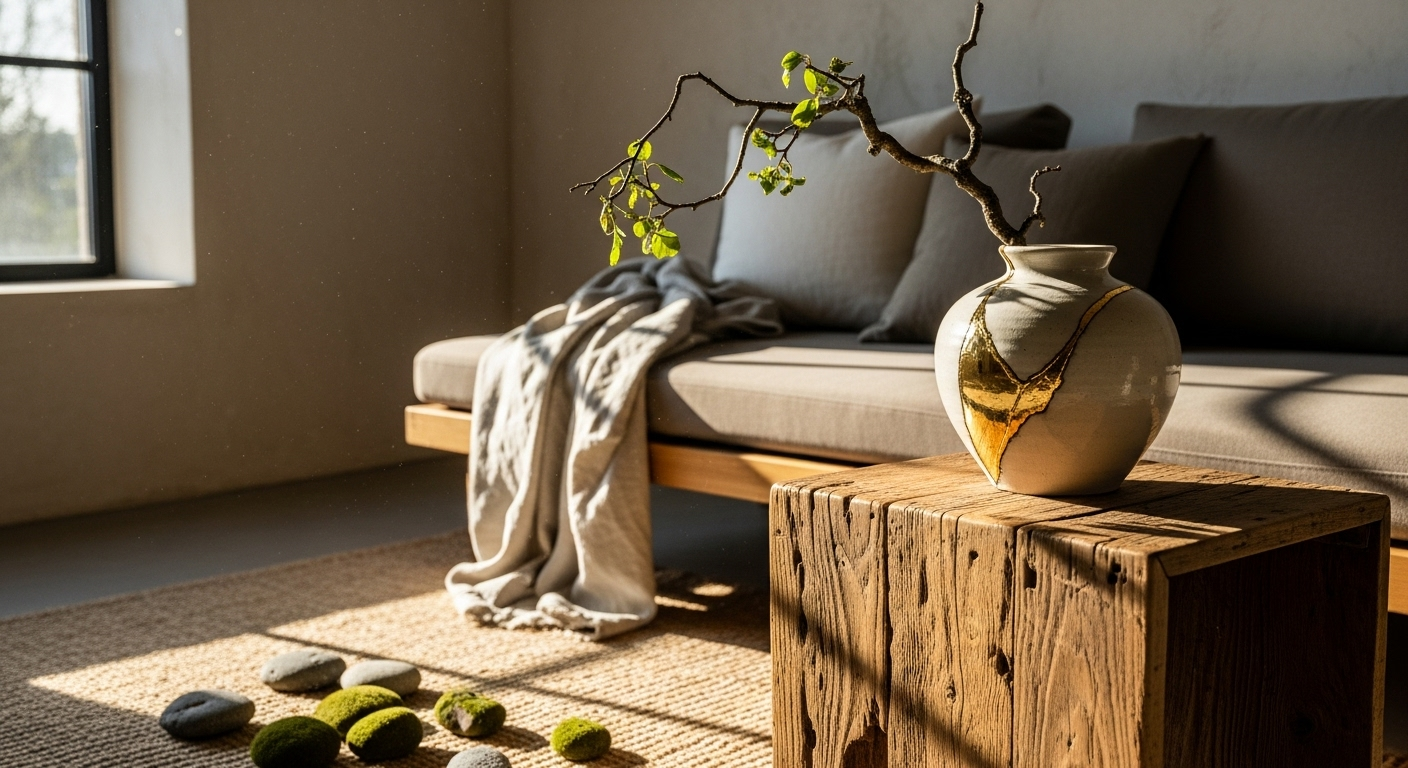Wabi-Sabi: The Art of Imperfect Beauty in Home Design
In a world obsessed with perfection, a new design philosophy is emerging that celebrates the beauty of imperfection. Wabi-sabi, an ancient Japanese aesthetic principle, is making waves in modern home design, offering a refreshing counterpoint to the sleek minimalism that has dominated interior trends for years. This centuries-old concept is finding new life in contemporary homes, bringing with it a sense of calm, authenticity, and connection to nature that many find irresistible.

The Roots of Wabi-Sabi
Wabi-sabi has its origins in 16th century Japanese tea ceremonies, where simple, rustic tea bowls were prized over ornate, perfect ones. The term combines two concepts: wabi, which refers to simplicity and a sense of humility, and sabi, which embraces the beauty that comes with age and wear. Together, they form a worldview that finds beauty in the flawed and fleeting nature of existence.
In traditional Japanese aesthetics, wabi-sabi manifested in sparse tea houses, weathered garden stones, and asymmetrical ikebana flower arrangements. Today, this philosophy is being reinterpreted for modern homes, offering a antidote to the relentless pursuit of perfection that often characterizes contemporary design.
Embracing Imperfection in Materials
At the heart of wabi-sabi design is a profound appreciation for natural materials and the way they age over time. Instead of hiding signs of wear, wabi-sabi celebrates them. This translates into a preference for raw, unfinished surfaces and materials that develop a patina with use.
Reclaimed wood, with its knots, nail holes, and weathered finish, is a staple of wabi-sabi interiors. Concrete floors left unsealed to show their natural variations and cracks embody the wabi-sabi spirit. Handmade textiles, ceramics with visible brush strokes, and metals allowed to rust or tarnish all contribute to the aesthetic’s lived-in charm.
The Color Palette of Wabi-Sabi
While wabi-sabi isn’t defined by a strict color palette, it typically leans towards muted, earthy tones that evoke a sense of calm and connection to nature. Soft whites, warm greys, and deep browns form the foundation, often complemented by subtle greens, blues, and terra cottas inspired by natural elements.
These colors are rarely flat or uniform. Instead, they show variation and depth, mimicking the subtle shifts in color found in nature. Walls might be finished with textured plaster in warm, irregular tones, while fabrics showcase the natural variations of plant-based dyes.
Curating with Intention
In a wabi-sabi home, less is decidedly more. But this isn’t about stark minimalism – it’s about thoughtful curation. Each object is chosen not for its perfection, but for its character and the story it tells. A chipped vase handed down through generations, a well-worn leather armchair, or a collection of smooth stones gathered from favorite beaches all have a place in a wabi-sabi interior.
This approach to decorating encourages a more mindful relationship with our possessions. Instead of constantly chasing the newest trends, wabi-sabi invites us to find beauty in what we already have, to repair rather than replace, and to allow our spaces to evolve naturally over time.
Bringing Nature Indoors
Wabi-sabi design blurs the lines between indoors and out, inviting nature into our living spaces. This goes beyond simply adding houseplants (though they certainly play a role). It’s about incorporating natural elements in unexpected ways – a branch with interesting texture becomes a sculptural piece, river stones are used as doorstops, or dried grasses are arranged in a simple vase.
Even the way light is used in wabi-sabi interiors mimics nature. Soft, diffused lighting is preferred over harsh overhead fixtures, creating a play of light and shadow that changes throughout the day, much like natural light filtering through trees.
The Psychological Benefits of Wabi-Sabi Design
Beyond its aesthetic appeal, wabi-sabi offers psychological benefits that resonate deeply in our fast-paced, perfection-driven world. By embracing imperfection, wabi-sabi interiors can reduce stress and promote a sense of acceptance – both of our environments and ourselves.
Studies have shown that being surrounded by natural materials and forms can lower cortisol levels and improve overall well-being. The focus on simplicity and mindful curation in wabi-sabi design can also help combat the mental clutter and overwhelm many experience in their daily lives.
Implementing Wabi-Sabi in Modern Homes
Incorporating wabi-sabi principles into your home doesn’t require a complete overhaul. Start small by introducing natural materials and handmade objects. Allow wooden furniture to show its age rather than refinishing it. Display collections of found natural objects. Opt for handmade ceramics over mass-produced dishes.
In larger renovations, consider leaving some elements unfinished or choosing materials that will age beautifully. A concrete countertop that shows wear over time, or copper fixtures allowed to develop a natural patina, embody the wabi-sabi spirit.
Remember, wabi-sabi is as much a mindset as it is an aesthetic. It’s about finding beauty in the everyday, appreciating the passage of time, and creating spaces that feel authentic and lived-in rather than showroom-perfect.
As we navigate an increasingly digital and perfection-driven world, the principles of wabi-sabi offer a refreshing perspective on home design. By embracing imperfection, celebrating natural materials, and curating our spaces with intention, we can create homes that not only look beautiful but feel deeply connected to the rhythms of nature and the passage of time. In doing so, we might just find that our imperfect spaces are perfect after all.





